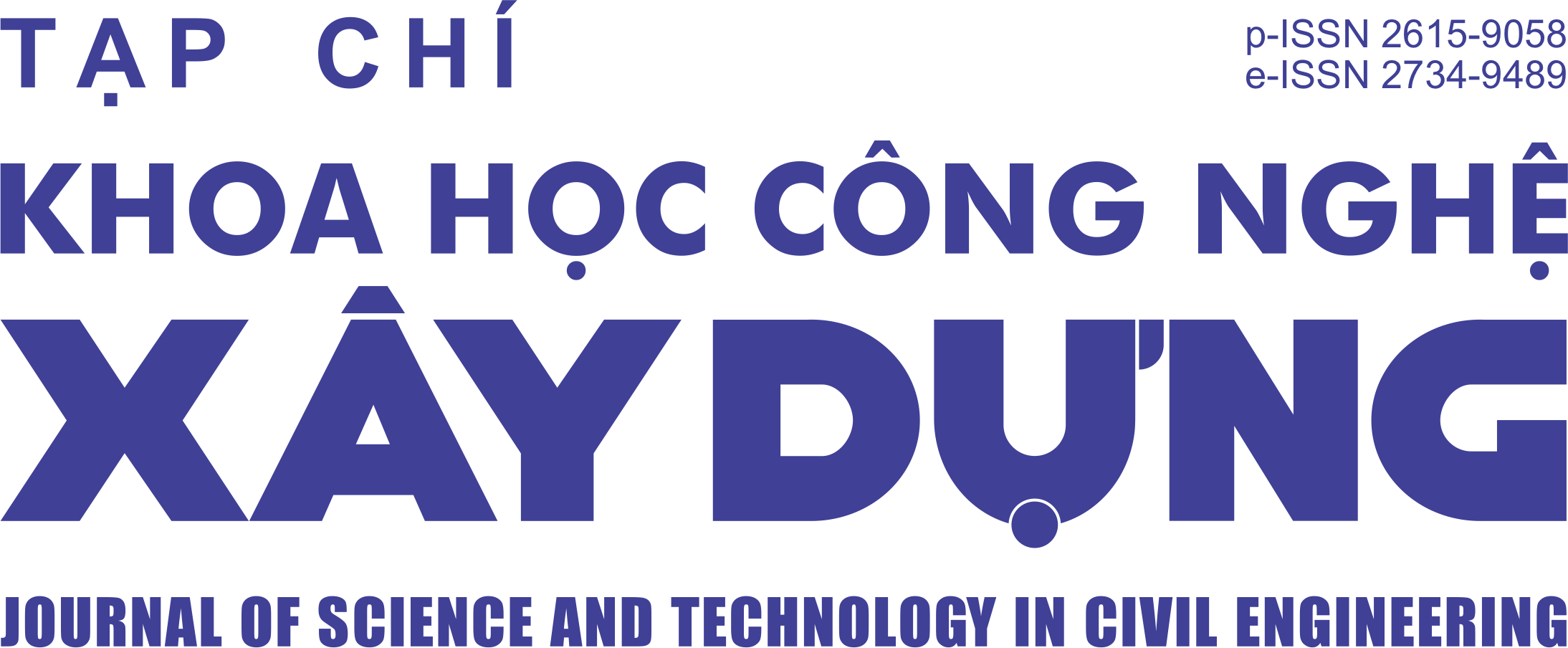Numerical analysis of compressive behavior of circular concrete filled steel tubular columns with high to ultra-high strength materials
Abstract
This paper presents a numerical analysis of the compressive behavior of short circular concrete filled steel tubular (CFST) columns having high to ultra-high strength materials under different compression loading cases. A matrix of thirty column specimens including CFST columns and empty steel tube ones was numerically investigated. Finite element model (FEMs) developed in ABAQUS were used to simulate these specimens, in which nonlinear tridimensional (3D ) finite elements were chosen for modeling both inner concrete core and outer steel tube. In this study, the materials of concrete and steel with compressive strength (f'c ) and yield strength ( fy) ranging from 100 to 120 MPa and from 525 to 595 MPa, respectively, were used. The CFST column specimens were concentric-compressively loaded by three cases, including entirely forcing on both the steel tube and concrete core (CFE), only forcing on the concrete core (CFC), and only forcing on the steel tube (CFS). Moreover, the empty steel tubes (EST) specimens were also compressively loaded. The numerical analysis results showed that the column’s mechanical behavior and load-carrying capacity mainly depend on the loading cases. In which, the CFC loading case leads to the highest load-carrying capacity and followed by the CFE loading case due to the confinement effect on the concrete core offered by the steel tube. Meanwhile, the CFS loading case results in the lowest load-carrying capacity of the CFST columns because the inner concrete core just keeps the outer steel tube more stable under compression loading compared to the EST loading case. Increasing the values of f'c and fy leads to a significant increase of the CFST column’s load-carrying capacity in cases of CFC and CFE.
Downloads
Copyright (c) 2023 Hanoi University of Civil Engineering

This work is licensed under a Creative Commons Attribution-NonCommercial-NoDerivatives 4.0 International License.
1. The Author assigns all copyright in and to the article (the Work) to the Journal of Science and Technology in Civil Engineering (JSTCE) – Hanoi University of Civil Engineering (HUCE), including the right to publish, republish, transmit, sell and distribute the Work in whole or in part in electronic and print editions of the Journal, in all media of expression now known or later developed.
2. By this assignment of copyright to the JSTCE, reproduction, posting, transmission, distribution or other use of the Work in whole or in part in any medium by the Author requires a full citation to the Journal, suitable in form and content as follows: title of article, authors’ names, journal title, volume, issue, year, copyright owner as specified in the Journal, DOI number. Links to the final article published on the website of the Journal are encouraged.
3. The Author and the company/employer agree that any and all copies of the final published version of the Work or any part thereof distributed or posted by them in print or electronic format as permitted herein will include the notice of copyright as stipulated in the Journal and a full citation to the Journal as published on the website.







